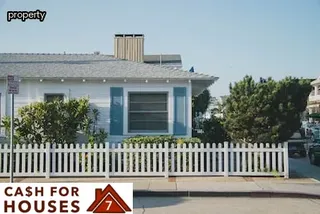When it comes to transferring property ownership in California, the two most common types of deeds are a Warranty Deed and a Quitclaim Deed. While they both serve the same purpose of transferring ownership, they involve different levels of responsibility and rights for the parties involved.
A Warranty Deed provides the buyer with more protection since it guarantees that the seller holds full title to the property with no liens or other encumbrances. This type of deed also includes warranties against any defect in title, which is why it is typically used when buying a home.
On the other hand, a Quitclaim Deed does not provide any such guarantee and serves mainly to transfer whatever interest or claim that one person has on a property to another person. It is most commonly used when two family members are transferring ownership between themselves or when removing someone from an existing deed.
It should be noted however that this type of deed does not affect mortgages or other encumbrances in place on a home and will not provide any protection for buyers if there are any issues with title at closing.

Filing a quit claim deed in California is a straightforward process, provided you have all the necessary information and documents. To prepare for filing, you need to locate the original deed for the property and determine if there are any outstanding liens or mortgages that need to be addressed.
You must also have all parties involved sign the deed before submitting to the county recorder’s office. If there is more than one owner, each must sign the deed individually unless they are married and have their property held as community property.
Additionally, make sure that the names on all of the paperwork match those listed in current public records. Once everything is in order, collect your filing fee and submit your paperwork to the county recorder's office where you will be asked to provide identification.
Once accepted, you will be provided with a certified copy of your deed that serves as proof of ownership.
The cost of filing a California Quitclaim Deed is an important factor to consider when transferring ownership of a home. The fee for filing this type of deed in the state of California varies according to county, but generally ranges from $20-$35.
In addition to the filing fee, there may be other costs associated with preparing and recording the deed, including notary fees, document preparation fees, title search fees and other miscellaneous costs. It is also important to note that some counties may require additional reports or forms to accompany the Quitclaim Deed when it is submitted for recording.
Before initiating a deed transfer in California, it is wise to contact the county recorder’s office to determine the exact cost associated with filing a Quitclaim Deed. Additionally, consulting an experienced real estate attorney can help ensure all necessary steps are taken during the process.

Filing a quitclaim deed in California has specific tax implications that must be taken into consideration. Before filing the deed, it is important to know how the transfer of property ownership will affect any current or future tax liability.
If the transfer does not involve an exchange of money, then there are no immediate income tax implications for either party; however, if there is a transfer of money involved, then both parties may be liable for capital gains taxes. When filing a quitclaim deed, both parties must sign in order to make the deed official and valid.
It is recommended that both parties receive legal advice before signing any documents as this could have potential implications on their taxes. Additionally, if there is a mortgage on the property being transferred you should contact your lender to make sure you understand any additional costs associated with transferring ownership.
Finally, when filing the quitclaim deed with the county recorder's office in California, fees may be required depending on what county you file in and what type of document needs to be recorded.
Filing a quitclaim deed for a California home is a common way for one party to relieve themselves of their interest in the property. When filing a quitclaim deed, it is important to understand how this can affect your mortgage.
Generally, when an individual or couple are on the title and mortgage of a California home, they are both responsible for making payments - regardless of who files the quitclaim deed. If only one person files the quitclaim deed, then the other will remain solely responsible for making all payments on the mortgage.
Although filing a quitclaim deed does not necessarily absolve either party from their debt obligation, it can be beneficial if one party wants to transfer ownership without having any further involvement in the property. In addition, when filing a quitclaim deed in California, lenders may require that you provide them with proof that the remaining owner has accepted responsibility for all loan payments; otherwise they may call your loan due in full.

Many people have successfully used California quitclaim deeds to transfer the ownership of their home. A real-life success story is that of a couple who was able to transfer the title of their residential property with a quitclaim deed, quickly and efficiently.
They found it to be an easy process that didn’t require any legal representation or costly fees. Another success story comes from a family who recently inherited a home and wanted to transfer the title into their name as soon as possible.
They were able to complete the process in just a few days and without any hassle. The process was straightforward and allowed them to safely transfer their inheritance without worrying about the legality of it all.
These are just two examples of how those in California can use quitclaim deeds to quickly and easily transfer ownership of homes without facing any complications or delays.
Filing a quit claim deed for a California home is an important legal process that must be completed correctly. Understanding the steps needed to complete this process is essential for any homeowner in California. A quitclaim deed is a legal document that transfers ownership of real property from one person to another, without warranties of any kind.
It is important to note that the transfer of ownership does not include any assurance that the title is clear or free from encumbrances. The first step in completing a quit claim deed for a California home is obtaining a copy of the form from the appropriate county recorder’s office or online. Once the form has been obtained, it must be completely filled out with accurate information regarding both parties involved in the transaction.
This includes providing detailed information such as name, address, and contact details for both parties, as well as an accurate description of the property being transferred. The next step is having all parties involved sign and date the form in front of witnesses and have it notarized by a notary public if necessary. Once this has been completed, it should be filed with the county recorder’s office along with any additional paperwork required by law.
Finally, it is important to note that filing fees may need to be paid depending on where the property is located and what type of transfer is being made. Following these steps will ensure that all required documents are properly submitted and help make sure that transferring ownership of a California home goes smoothly.

When considering the use of a quitclaim deed in California, it is important to research reviews and understand the implications before taking action. Analyzing reviews can provide valuable insight into the process of filing a quitclaim deed for a California home and help to ensure that all requirements are met.
Many reviews provide an overview of the paperwork necessary, as well as advice on how to complete the forms correctly and efficiently. Additionally, many reviews will highlight any potential risks or drawbacks associated with using a quitclaim deed, so that homeowners can make informed decisions regarding their property transfers.
Reviews may also discuss any additional fees or costs associated with filing in different counties or states that could influence your decision-making process. Taking time to read through reviews will provide homeowners with helpful information when deciding whether or not to file for a quit claim deed in California.
Filing a quitclaim deed is an important part of transferring ownership of a California home, but it is not always necessary. Before choosing this option, it is important to understand the appropriateness of when to file and what it involves.
A quitclaim deed is an agreement where the current owner transfers any ownership of the property they may have to another person or entity. This type of transfer is often used between family members, as it can be done quickly and without having to go through a lengthy probate process.
It should not be used in cases where there are mortgages held against the property, as this could cause complications with lenders. Additionally, in most cases, filing a quitclaim deed will not provide any protection from creditors or other liens against the property, so these should be taken into consideration before choosing this route for transfer of ownership.
In order for the quitclaim deed to be valid in California, all parties must sign the document and have two witnesses present at the time of signing. Furthermore, all documents must then be filed with the county recorder's office for official record keeping purposes.

When filing a quit claim deed in California, it is important to follow the necessary steps to ensure that the process goes smoothly. The first step is to obtain the appropriate quitclaim deed form and fill it out correctly.
This includes providing all relevant information such as the home address and accurate descriptions of any local registered covenants or restrictions. It must also include the names of all parties involved, including any grantors and grantees, as well as their contact information.
Once this has been completed, the form must be signed by all parties involved in front of a notary public. In some cases, additional documents may be required such as a marriage certificate if you are filing jointly with your spouse.
Finally, after all signatures have been affixed and notarized, make sure to submit your completed form to your county recorder’s office for registration. Taking these steps will help ensure that your California quitclaim deed is properly filed and registered with the county.
In addition to filing a Quit Claim Deed for a California home, there are other documents that must also be submitted. These documents include the Grant Deed, previous deeds or title transfers pertaining to ownership of the property, a Preliminary Change of Ownership Report, and a Notice of Completion.
The Grant Deed is used to register the transfer of ownership from one party to another and should include any applicable legal descriptions. The Preliminary Change of Ownership Report serves as an assessment form that provides information on the purchase price and other details surrounding the transaction.
Finally, a Notice of Completion should be filed with the county recorder once all necessary paperwork has been completed. All documents submitted should include signatures from both parties involved in the transfer in accordance with California law.

When it comes to listing real estate titles in living trusts in California, the best practice is to file a quit claim deed. A quit claim deed is an official document that transfers property ownership from a grantor to a grantee and should be filed with the county recorder's office in the county where the property is located.
The grantor must sign the document and provide proof of identity, such as a driver's license or passport. Additionally, it must include the legal description of the property and signatures of all parties involved.
Once the deed has been recorded, it becomes public information and can be accessed by anyone who requests it. To ensure accuracy, have an attorney review the quit claim deed before filing it with the county recorder's office.
This will ensure that all necessary documents are included, any errors corrected, and that title is properly transferred into a living trust.
Filing a quit claim deed for a California home is an important step in transferring property ownership. Quit claim deeds are legally binding documents that allow individuals to transfer ownership of real estate quickly and simply, with no warranties provided.
The process requires the use of specialized forms, filing fees, and knowledge of the relevant state laws and regulations. This comprehensive guide will provide you with all the necessary information you need to understand and complete the quit claim deed process in California.
You will learn about the various types of quit claim deeds, when they are necessary, what forms must be filled out and filed, how to obtain the proper paperwork, how to file all documents properly in court or county offices, any applicable fees required for filing as well as any other applicable taxes or payments due after filing. Additionally, you'll find helpful tips on ways to make sure that your quit claim deed is valid and accepted by the courts.
With this guide in hand, you can be confident that you have all the tools you need to successfully complete your quit claim deed for a California home.
Filing a quit claim deed in California requires the payment of certain fees. The cost of filing varies by county, but generally ranges from $15 to $25.
Additional fees may apply if the property is located in more than one county. In addition to the filing fee, the individual submitting the quit claim deed must also pay a processing fee which is usually around $8-$10.
Furthermore, if the document is being recorded electronically, there may be additional charges for e-recording services. It is important to note that some counties may require additional paperwork or other documents to be submitted along with the quit claim deed.
Therefore, it is essential to check with your local county recorder's office before submitting your application to ensure that all required documents are included and that you have paid all applicable fees.

Filing a Quit Claim Deed in California can be a complex process, so it's important to understand the steps involved to ensure that your property is legally transferred. The first step is to obtain a Quit Claim Deed form from your local county recorder’s office.
Once you have the form, you'll need to fill in all of the required information including the address of the property being transferred, the names of all parties involved in the transfer, and any additional documentation needed such as proof of ownership or title documents. You'll then need to sign and date the document before having it notarized.
After this has been completed, you will need to file the deed with your local county recorder’s office. In most cases, you will receive a recorded copy back after filing along with any fees that may apply.
It's important to keep this copy for your records as it serves as proof that the transfer has been completed. By following these steps, you can successfully file a Quit Claim Deed in California and protect yourself from potential legal issues down the line.
A quitclaim deed in California is an important legal document that serves several different purposes. It is used to transfer the rights and interests of a property from one party to another, and it can be used to clear title to a property, change ownership of a property, or add or remove joint owners of a property.
A quitclaim deed is also commonly used as part of the estate planning process in California. These deeds are generally used when transferring ownership without warranty of title or any other claims, which means that the grantor (the person giving up the rights) does not guarantee that the grantee (the person receiving the rights) will have valid title and possession of the property.
The quit claim deed is typically recorded with the County Recorder’s office, ensuring that all parties involved are aware of any changes in ownership or other legal rights associated with a given piece of real estate.
Yes, a quitclaim deed needs to be recorded in California in order to transfer ownership of real estate. By recording the quitclaim deed, it becomes part of the public record and is legally binding.
To ensure that the transfer is completed correctly and all legal requirements are met, it is important to follow the appropriate steps for filing a quitclaim deed in California. This complete guide explains how to file a quitclaim deed for a California home, including obtaining the necessary forms, filling them out correctly, and submitting them to the county recorder's office.
Additionally, this guide will provide an overview of any fees associated with recording and transferring property in California as well as other important details related to filing a quitclaim deed. With this comprehensive guide on hand, you can confidently file your quitclaim deed and transfer ownership of your California home.
A quit claim deed is a legal document that transfers ownership of real estate property from one person to another. Filing a quit claim deed in California requires the completion of certain steps and understanding the applicable laws.
In California, a quit claim deed is legally binding, provided it meets all the statutory requirements for filing. A grantor, who is transferring their interest in the property, must sign and deliver the deed to the grantee, who will receive their interest in the property.
The deed must then be filed with the County Recorder's Office where the property is located; all parties involved must have valid identification and any additional required documents when filing. Once filed, all interested parties are legally bound by terms of the quit claim deed and no further action needs to be taken to make it valid.
Understanding how to properly file a quit claim deed in California ensures that all parties involved have full rights to their respective interests in the property according to state law.